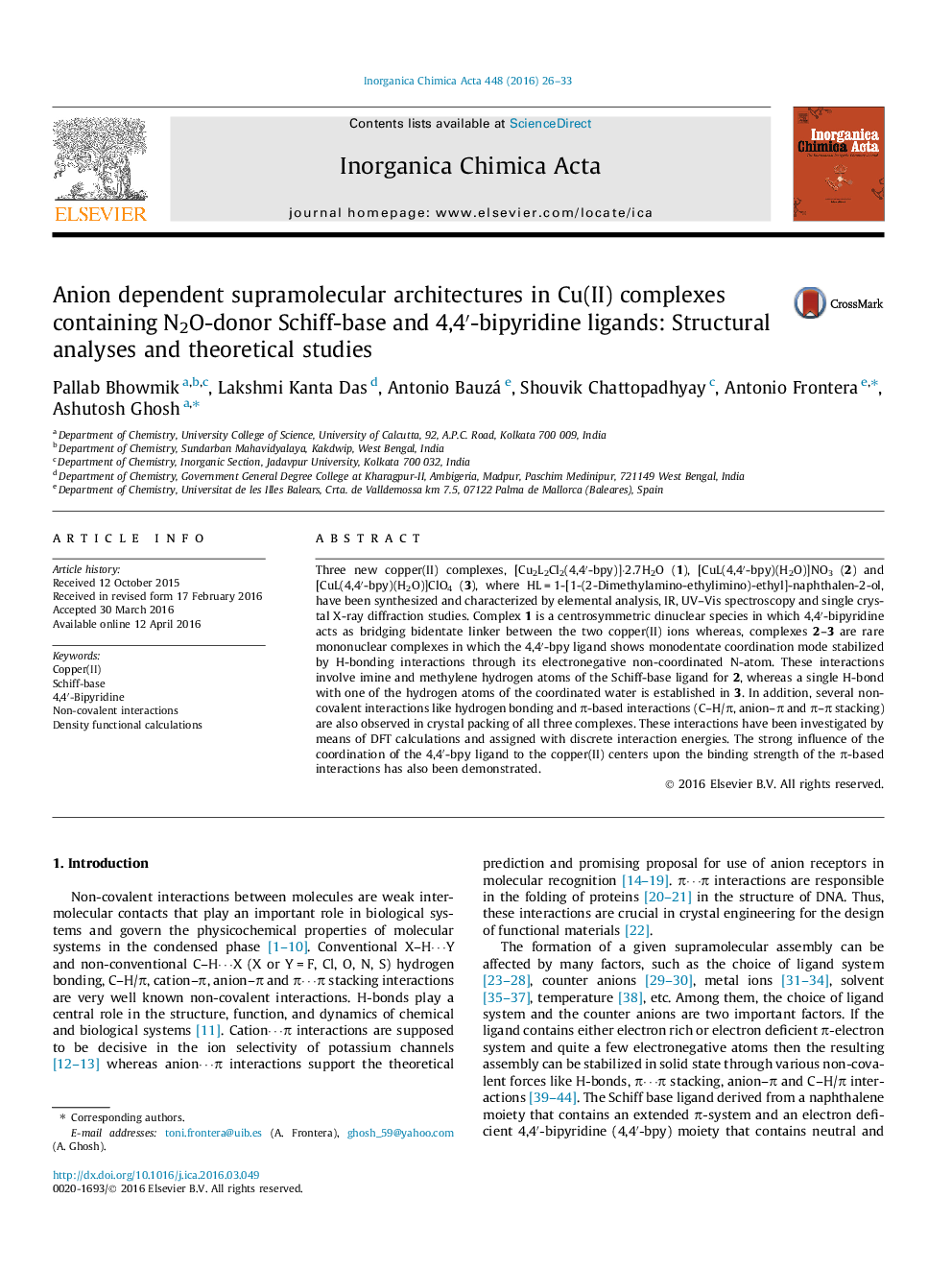| Article ID | Journal | Published Year | Pages | File Type |
|---|---|---|---|---|
| 1306370 | Inorganica Chimica Acta | 2016 | 8 Pages |
•Supramolecular architectures of a dimeric and two rare monomeric complexes.•Anion dependent synthesis using Schiff-base and 4,4′-bipyridine.•Monodentate mode of 4,4′-bipyridine is stabilized by H-bonding.•Different types of π-based interactions in solid state.•Investigation of interactions by means of DFT calculations.
Three new copper(II) complexes, [Cu2L2Cl2(4,4′-bpy)]·2.7H2O (1), [CuL(4,4′-bpy)(H2O)]NO3 (2) and [CuL(4,4′-bpy)(H2O)]ClO4 (3), where HL = 1-[1-(2-Dimethylamino-ethylimino)-ethyl]-naphthalen-2-ol, have been synthesized and characterized by elemental analysis, IR, UV–Vis spectroscopy and single crystal X-ray diffraction studies. Complex 1 is a centrosymmetric dinuclear species in which 4,4′-bipyridine acts as bridging bidentate linker between the two copper(II) ions whereas, complexes 2–3 are rare mononuclear complexes in which the 4,4′-bpy ligand shows monodentate coordination mode stabilized by H-bonding interactions through its electronegative non-coordinated N-atom. These interactions involve imine and methylene hydrogen atoms of the Schiff-base ligand for 2, whereas a single H-bond with one of the hydrogen atoms of the coordinated water is established in 3. In addition, several non-covalent interactions like hydrogen bonding and π-based interactions (C–H/π, anion–π and π–π stacking) are also observed in crystal packing of all three complexes. These interactions have been investigated by means of DFT calculations and assigned with discrete interaction energies. The strong influence of the coordination of the 4,4′-bpy ligand to the copper(II) centers upon the binding strength of the π-based interactions has also been demonstrated.
Graphical abstractDifferent supramolecular architectures of one dinuclear and two mononuclear complexes containing N2O-donor Schiff-base and 4,4′-bipyridine ligands have been obtained by varying the counter anions. These have been analyzed by both experimental techniques and DFT calculation.Figure optionsDownload full-size imageDownload as PowerPoint slide
